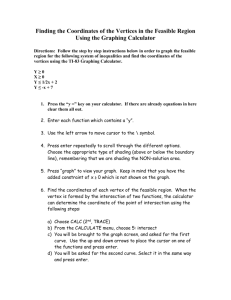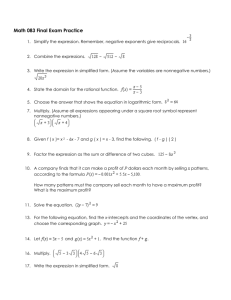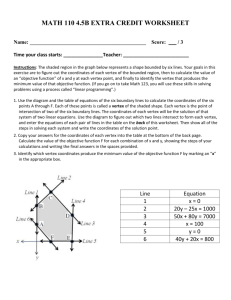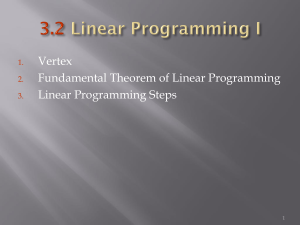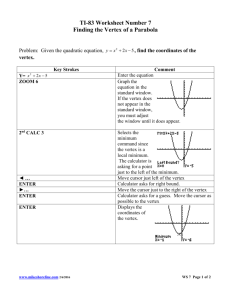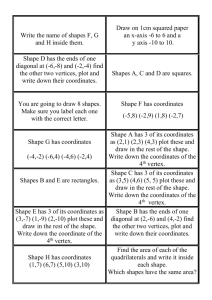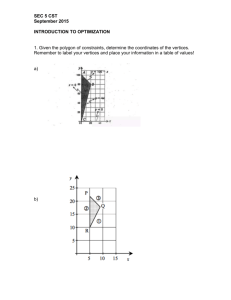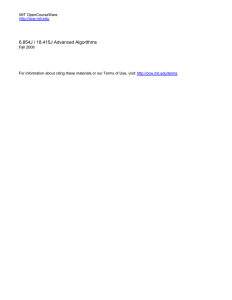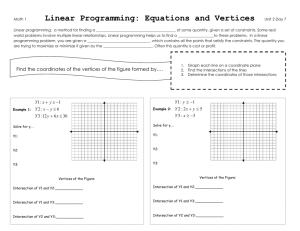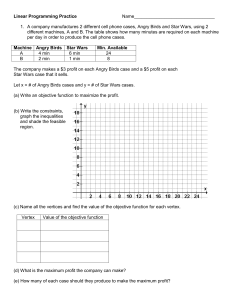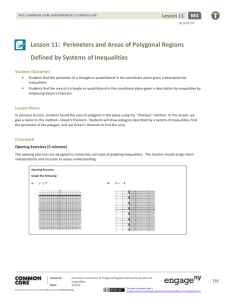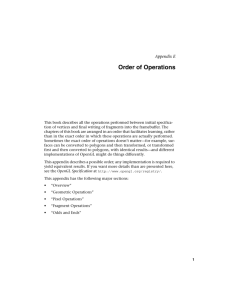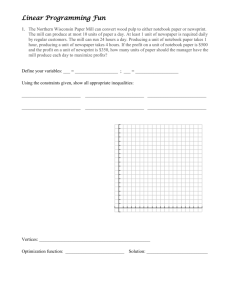3-4 Linear Programming
advertisement
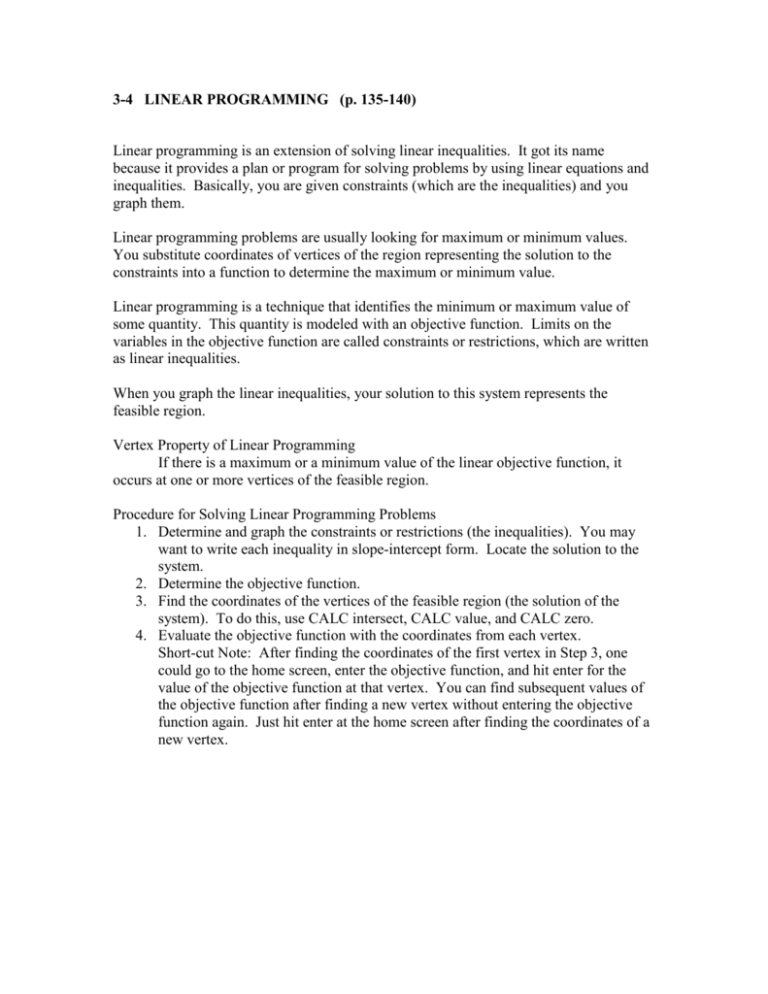
3-4 LINEAR PROGRAMMING (p. 135-140) Linear programming is an extension of solving linear inequalities. It got its name because it provides a plan or program for solving problems by using linear equations and inequalities. Basically, you are given constraints (which are the inequalities) and you graph them. Linear programming problems are usually looking for maximum or minimum values. You substitute coordinates of vertices of the region representing the solution to the constraints into a function to determine the maximum or minimum value. Linear programming is a technique that identifies the minimum or maximum value of some quantity. This quantity is modeled with an objective function. Limits on the variables in the objective function are called constraints or restrictions, which are written as linear inequalities. When you graph the linear inequalities, your solution to this system represents the feasible region. Vertex Property of Linear Programming If there is a maximum or a minimum value of the linear objective function, it occurs at one or more vertices of the feasible region. Procedure for Solving Linear Programming Problems 1. Determine and graph the constraints or restrictions (the inequalities). You may want to write each inequality in slope-intercept form. Locate the solution to the system. 2. Determine the objective function. 3. Find the coordinates of the vertices of the feasible region (the solution of the system). To do this, use CALC intersect, CALC value, and CALC zero. 4. Evaluate the objective function with the coordinates from each vertex. Short-cut Note: After finding the coordinates of the first vertex in Step 3, one could go to the home screen, enter the objective function, and hit enter for the value of the objective function at that vertex. You can find subsequent values of the objective function after finding a new vertex without entering the objective function again. Just hit enter at the home screen after finding the coordinates of a new vertex. Example: Find the values of x and y that maximize and minimize P if P = -5x + 4y 2 11 y - 3 x 3 1 11 y x 4 4 y 3x 11 At (1,3) P =7 At (4,1) P = -16 Examine and discuss Ex. 2 on p. 137. Show how the profit is determined. Put each inequality in slope-intercept form so that you can use your TI. 500 - 12x y 20 600 - 24x y 15 x 0 y 0 Do 2 on p. 137. P = 27x + 15y Homework p. 138-140: 1,3,5,9,11,13,17,24,25,34,41 11. Let x = no. of spruce Let y = no. of maple x 0 y 0 30x 40y 2100 600x 900y 45,000 Use y 2100 30 x 45,000 600 x and y . 40 900 C = 650x + 300y Plant 70 spruce and 0 maple. 13. Let x = no. of Type 1 bacteria Let y = no. of Type 2 bacteria 4x 3y 240 30 x 60 0 y 70 C = 5x + 7y Coordinates of vertices: (30,70), (30,40), (60,70), (60,0) 60 samples of Type 1 and 0 samples of Type 2 Note: The Linear Programming Technology activity on p. 141 has been incorporated within 3.4. Students could be assigned a problem on p. 141 for a partner grade if extra practice is needed.
